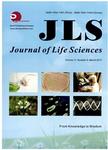Neoadjuvant Chemotherapy for Transitional Cell Carcinoma of the Bladder: A Single Centre Experience
Neoadjuvant Chemotherapy for Transitional Cell Carcinoma of the Bladder: A Single Centre Experience作者机构:Department of Medical Oncology Sindh Institute of Urology & Transplantation Karachi Pakistan Department of Pathology Sindh Institute of Urology & Transplantation KarachL Pakistan
出 版 物:《Journal of Life Sciences》 (生命科学(英文版))
年 卷 期:2016年第10卷第2期
页 面:85-90页
学科分类:0832[工学-食品科学与工程(可授工学、农学学位)] 081702[工学-化学工艺] 08[工学] 0817[工学-化学工程与技术]
主 题:Bladder cancer neoadjuvant chemotherapy cystectomy transitional cell carcinoma.
摘 要:Urothelial cancers usually recur distantly rather than loco-regionally. In patients with pT2 and pT3/pT4 tumors, local recurrence has been observed in 3-4% and 11-16%, respectively, whereas distant failure has occurred in 10-27% and 19-35%, respectively. Despite local therapy most patients with muscle invasive transitional cell carcinoma (TCC) of the bladder die of systemic relapse, indicating a need for effective adjunctive systemic treatment. We determined whether neoadjuvant chemotherapy improved overall survival. This study evaluated the role of neoadjuvant combination chemotherapy with gemcitabine/cisplatin (GC) in improving the outcome of this group of patients. A total of 44 patients (84% Male, 16% Female) with newly diagnosed bladder cancer (T3-4, N0-2, M0) were subjected to initial 3 cycles of GC, then managed according to response. Patients were assessed clinically after each cycle and by Interim CT scan after 3 cycles of chemotherapy and those who achieved complete or partial response underwent radical cystectomy. We enrolled 63 patients, 19 of whom were found to be ineligible; thus, 44 were assigned to receive neoadjuvant chemotherapy followed by surgery. Average size of the largest tumor was greater that 30mm in 77% patients. According to Computed Tomographic findings 70% patients belonged to Stage T4A. The overall response rate to GC was 50%, and incomplete response was achieved in 25% whereas 25% patients were lost to follow up. Twenty two patients who had complete response, underwent cystectomy and diversion. It was observed that those patients who underwent radical cystectomy with ureterosigmoidostomy had an increased serum creatinine in comparison to patients who had ileal conduit. The size of the effect is modest and combination chemotherapy can be administered safely without adverse outcomes resulting in delayed local therapy. Further efforts to identify the patients most likely to benefit from neoadjuvant therapy are necessary to optimize its us



